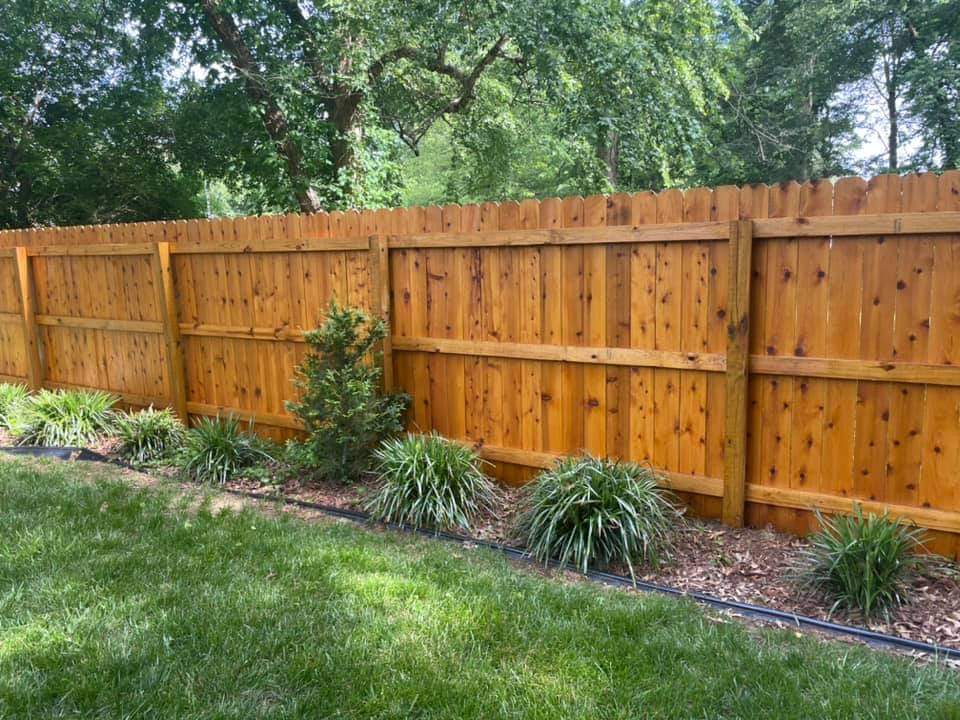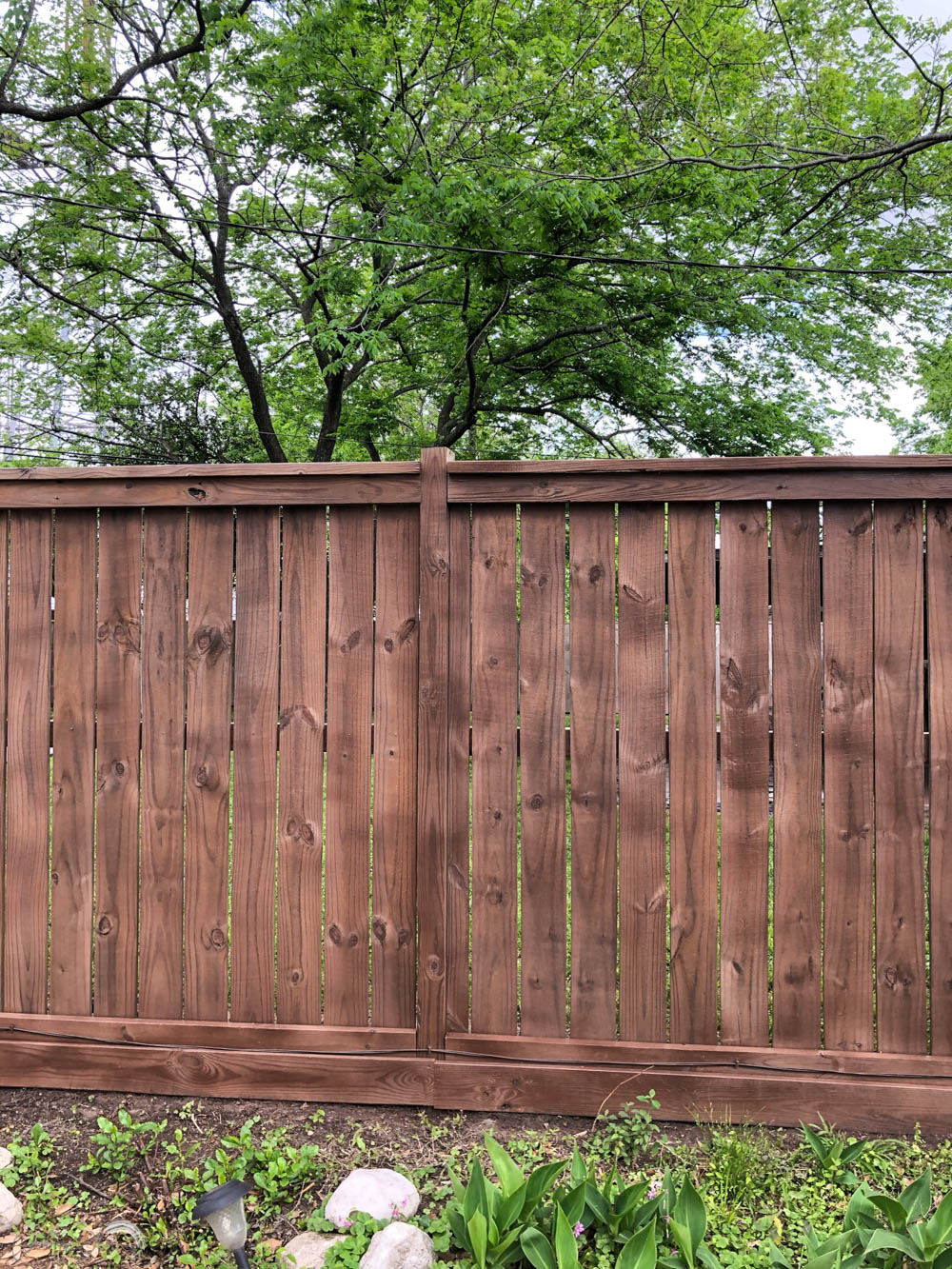Just How to Choose the Right Fence Discoloration for Your Residential Property
When it comes to boosting the look and sturdiness of your home's fencing, choosing the appropriate tarnish is a crucial choice that calls for careful consideration. Exactly how can you ensure that you pick the ideal fencing stain that aligns with your home's design and maintenance requirements?
Recognizing Wood Types
To choose the suitable fencing stain, it is important to have an extensive understanding of the various kinds of wood typically utilized for secure fencing. The choice of timber plays a vital duty in identifying the durability and total aesthetic appeals of the fencing. Cedar is a preferred selection due to its all-natural resistance to decay and pests, making it a resilient option for outside frameworks. Pine is another typical timber utilized in fencing, recognized for its cost and ease of staining. Want is much more susceptible to bending and deteriorating compared to cedar. Redwood is a high-end alternative understood for its striking appearance and natural longevity, though it features a greater price. When selecting a fence tarnish, it is crucial to consider the sort of wood being used to ensure compatibility and optimum defense. Recognizing the features of various wood kinds will certainly help you make an educated choice when it involves picking the ideal fencing discolor for your property - Fence Staining Nashville TN.
Choosing the Right Color
Choosing an appropriate tone for your fence discolor is a vital decision that significantly affects the total visual allure of your home. Lighter colors such as whites or light grays can make a fence show up larger and include a touch of beauty to your home. Inevitably, the right shade choice will enhance the appeal of your fence and elevate the total visual charm of your home.

Taking Into Consideration Transparency Levels
When picking the right shade for your fencing discolor, an additional important facet to consider is the degree of openness that will ideal match your residential or commercial property's aesthetic and upkeep needs. Transparency levels in fencing spots typically drop right into three categories: clear, semi-transparent, and solid. Take into consideration the level of exposure your fence encounters, the wanted upkeep regularity, and the aesthetic you want to accomplish when choosing the ideal openness level for your fence discolor.
Reviewing Maintenance Demands
Thinking about the long life and upkeep of your fencing, evaluating the upkeep requirements is crucial in establishing the most ideal fence discolor for your residential property. The degree of upkeep required for your fencing can vary depending on elements such as the type of timber, climate condition in your location, and your individual choices.
When reviewing maintenance needs, it is crucial to consider the longevity of the fencing tarnish. Some discolorations need even more regular reapplication than others, so selecting a discolor with a longer life expectancy can help in reducing the general upkeep demands of your fence (Fence Staining Service). Additionally, factors such as resistance to UV rays, water, and mold can influence just how often you need to re-stain your fence

Examining Examples Prior To Application
Prior to using any type of fence stain, it is a good idea to carry out example tests to ensure compatibility with the wood and preferred visual outcome. Go Here Evaluating examples enables you to assess exactly how the stain will certainly communicate with the specific kind of timber utilized in your fence, as different timbers can soak up spots in different ways. To start, choose a little inconspicuous area of the fencing to use the stain samples.
Conclusion
To conclude, picking the suitable fencing tarnish for your residential property entails recognizing the wood type, picking the right color, thinking about openness degrees, evaluating maintenance needs, and testing examples prior to application (Fence Staining). By taking these variables right into factor to consider, you can guarantee that your fencing discolor complements your property while offering the needed defense and resilience. Make an educated choice to enhance the appearance and durability of your fence